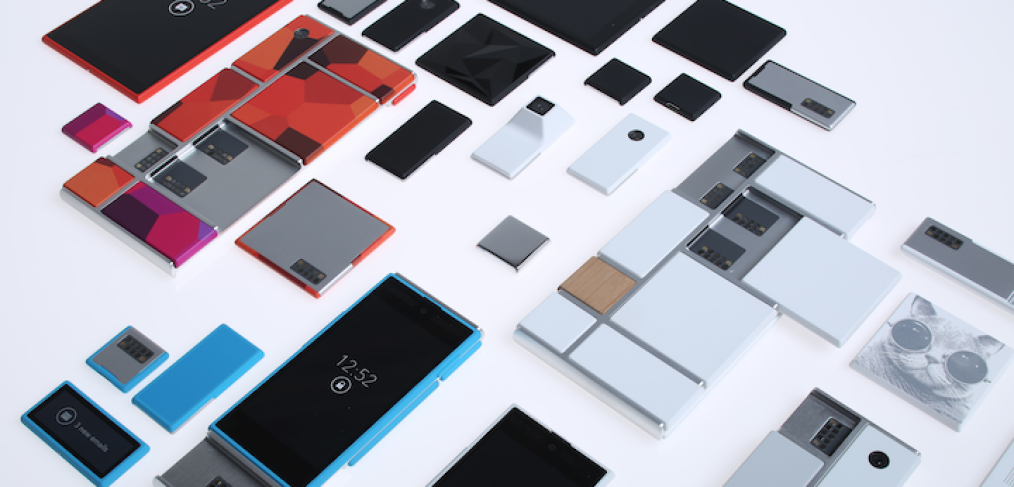
Building the perfect smartphone
It’s that time of the year again. In just over a month, several of the world’s biggest names in smartphones will unveil a new crop of flagship smartphones, each brand’s pièce de résistance for 2015.
The annual Mobile World Congress in Barcelona is where it’s all expected to go down. Everyone but Apple is expected to be there, and for those aiming for smartphone supremacy, the stakes are higher than ever.
After selling a record breaking 74.5 million iPhones in the fourth quarter of 2014, Apple is now the world’s largest smartphone vendor, an honor that’s slipped out of Samsung’s grasp after last year’s Galaxy S5 failed to meet expectations.
But with the new year, comes new beginnings. Samsung for example has pledged to design it’s upcoming S6 from scratch and is also said to be working on a second S6 variant with an edge display; Chinese manufacturer Huawei wants to capture the small-screen smartphone market with the new Mate7 Compact; and HTC is rumored to be working on a pair of iPhone 6-like clones, the HTC One M9 and M9 Plus.
For manufacturers, so much is riding on the success of these phones, failure means a smaller piece of the global pie, which is already smaller to begin with, considering the increasing number of players jousting for a slice – yep, there are now at least 20 global smartphone brands.
These days, everyone it seems, can build a smartphone, but not everyone can build one that everyone wants to buy.
Which makes me think, if I were to build the perfect smartphone – What would it look like? How would it feel? What features would it have? And what would make it standout in sea of options?
Better Battery Life, Faster Charging
I want a phone that will last a whole day and then some with heavy use. I’ve read that the best way to preserve battery is to turn off Bluetooth, Wi-Fi, Location Services, 3G and to keep brightness down – but it doesn’t make sense to buy a high-end phone with all the bells and whistles, only to cripple features in the name of better battery life.
The problem is existing smartphones are limited by lithium-ion technology – where capacity is equally proportional to physical battery size. Unless they make the phone larger and/or shrink other components there’s no way to increase the battery capacity of a smartphone. Researchers at MIT and companies like Applied Materials are working on new battery technologies that will address these problems – whether this happens in 2015 remains to be seen, I’m keeping my fingers crossed.
In the meantime, I think Samsung’s Ultra Power Saving Mode deserves some props. When activated, the software feature built into Samsung’s 2014 lineup gives your dying phone a new lease on life – enough at least to last till you get home. It’ll cut off the color display and most other apps but will still let you call, text, surf the Internet, get Facebook & Twitter updates or chat with Whatsapp or Line contacts. It’s a life saver of a feature I’d like to see built into every smartphone today, as a stop gap measure until new battery technology comes our way.
While we’re at it, I also want faster charging (say 0 to 50% in 5 minutes) and wireless charging that doesn’t require contact with a charging plate.
Looks Good, Feels Good
Last year I wrote, “let’s face it, the way a smartphone looks (and feels) is equally as important as how it performs.” One reader called it the most ridiculous thing he’s ever heard. He’s wrong! If looks don’t matter, Samsung would have sold more S5s last year and Apple would have sold less iPhone 6s. It’s also why there’s a trend toward metallic builds, brushed aluminum finishes, chamfered edges, and gold among a host of color options. For an object that you see and hold more times than any other object on any given day, looks matter. Smartphones are not just tools or accessories, they are, in many respects, an extension of who we are as individuals.
Apple’s iPhone is still the best designed smartphone out there bar none. I also like the HTC One M8 with its brushed aluminum finish, front facing speakers and curved back.
That curved back is an ergonomic win. Both HTC and LG (whose G3 sports a similar rounded back) are right on the money as curved backs on smartphones match the natural curves of one’s palms – the result is a more secure and comfortable grip.
Aside from looks and ergonomics, I also want a phone that can survive the rough and tough of daily life. I’m not just talking about scratch resistant Gorilla Glass displays. I’m talking about the legendary resilience of Nokia phones from the late 90s that could be dropped hundreds of times and still work. Last month LG announced the G Flex 2 with a magical self-healing plastic back that, as its name implies, self heals within seconds a being scratched. I want the same thing, but for metal builds.
Give me ruggedness, give me waterproofing but keep the design premium and unencumbered by rubber stoppers and bulk. Experiment with new sturdier materials if you have to.
Superb photos always
I’ve come to expect great photos from my smartphone. As manufacturers have settled on a comfortable number of megapixels anywhere between 13 and 20 million, the challenge has been to fit in larger image sensors that can capture more detail and light. Nokia leads the way in this department with the Lumia 1520, although Panasonic has the only smartphone in the market today with a 1-inch sensor (except that the phone’s not really that good).
I trust that the likes of Apple and Samsung and LG will continue to improve on their already solid smartphone cameras. I have higher expectations from Sony which makes some of the best mirrorless cameras in the world. And then there’s the HTC One that’s primary selling point is a larger sensor “ultra pixel” camera that falls short on megapixels.
Consumers are not going to care much about the spec, but they deserve smartphones that are as good cameras, as they are phones. I don’t have many complaints about what’s already in the market today, but it won’t hurt if the technology gets even better. Maybe Samsung could build on what it’s done with the NX Mini and give us interchangeable lenses on a smartphone.
Expandable and Customizable
Where Android trumps iOS is the gift of openness and expansion. Many Android phones have a combination of hardware and software that allow file transfers by just tapping devices together. Android, while a tad bit complex, is also more customizable.
Little things like being able to swap out batteries, add storage or change SIM cards are invaluable to any smartphone. Unfortunately, expandability comes at the cost of design, but this shouldn’t be the case. Can’t we have both?
Enter Google’s Project Ara – a futuristic look into a modular smartphone where users can mix and match components based on their needs. The project is based on assumption that we all could “make thoughtful choices about exactly what (our) phone does.”
While no where near ready for primetime, at last year’s Google I/O Developers conference a prototype that sorta worked was demoed – the vision is lofty, but the developments are promising. It sure would be great to have more say in what our smartphones do and how they look and work.
Ironically, as a tech journalist always craving the next big thing, I’m perfectly happy with a smartphone that isn’t necessarily groundbreaking but one that fits my specific needs, delivers on the key features I value, and improves on already existing features.
The perfect smartphone already exists, but for now as multiple pieces of a puzzle spread out across different smartphones. One day, maybe, a manufacturer will put them all together, unless we get the power to do it first.
“Building the perfect smartphone” was first published in The Philippine Star on February 2, 2015 as part of my regular Gadget Week column. The Philippine Star Technology Section is printed every Monday, and is also available as a digital download from digitaledition.philstar.com.
